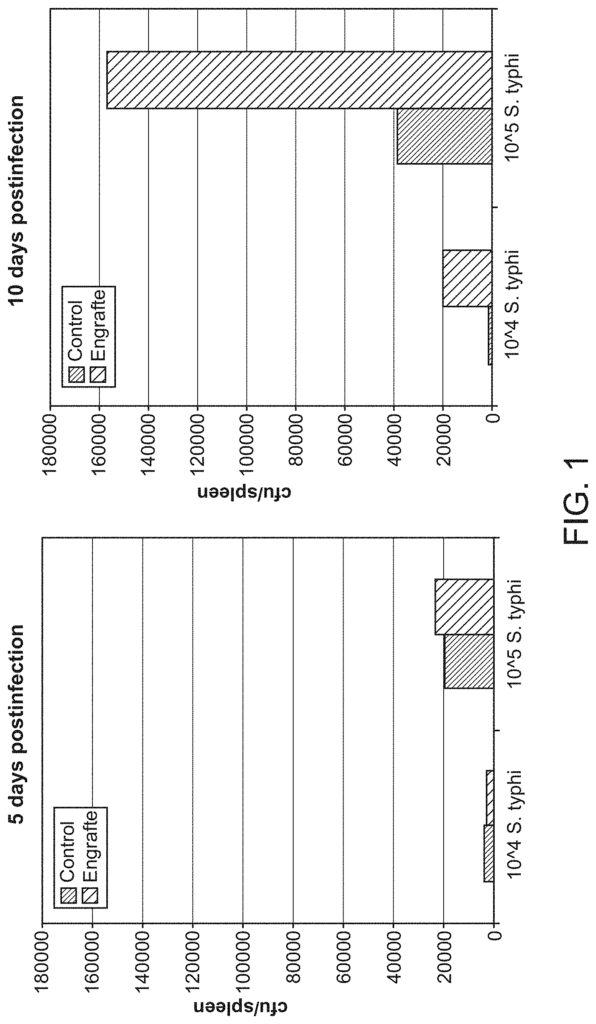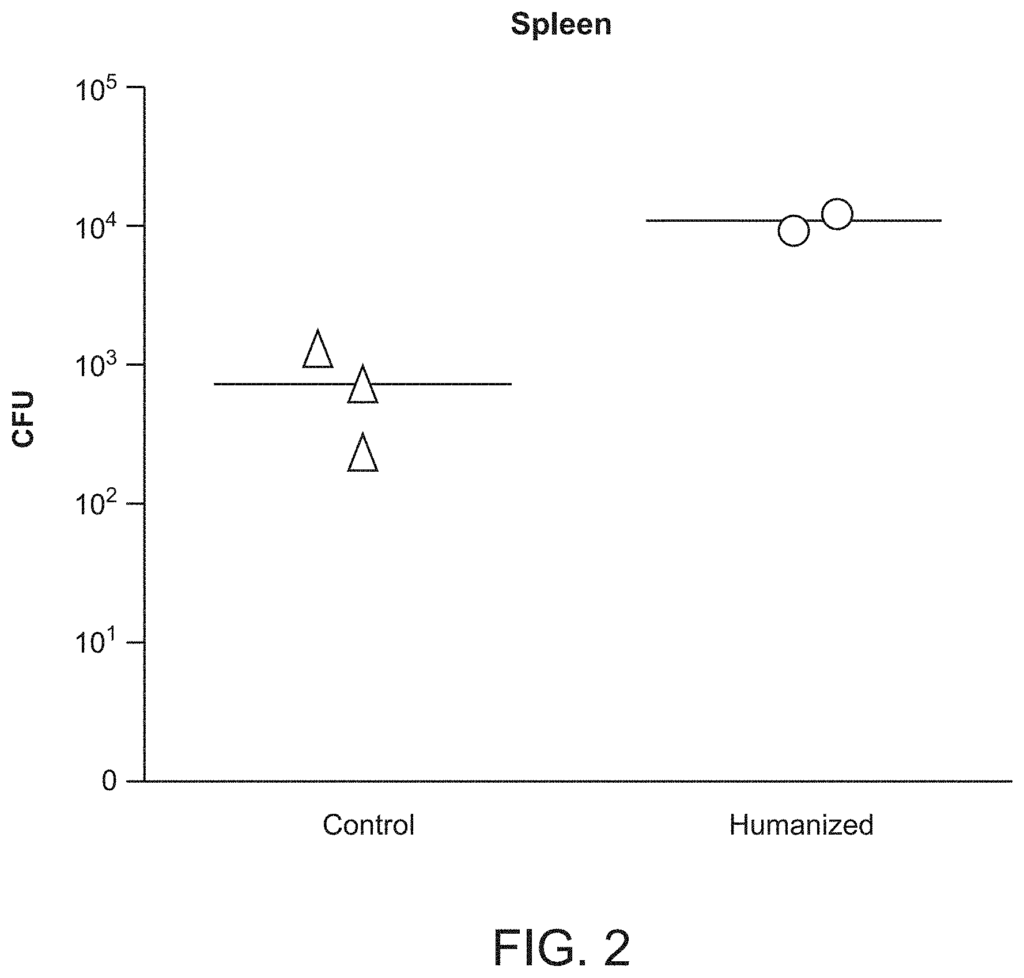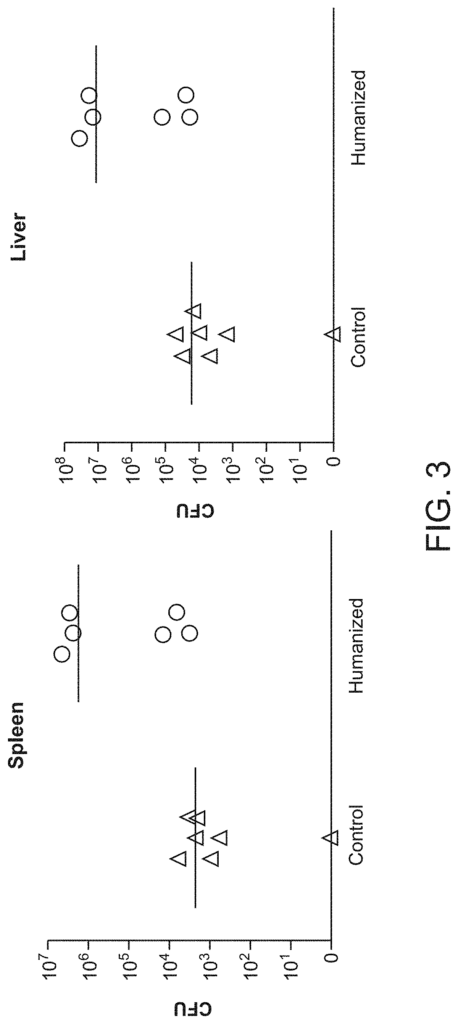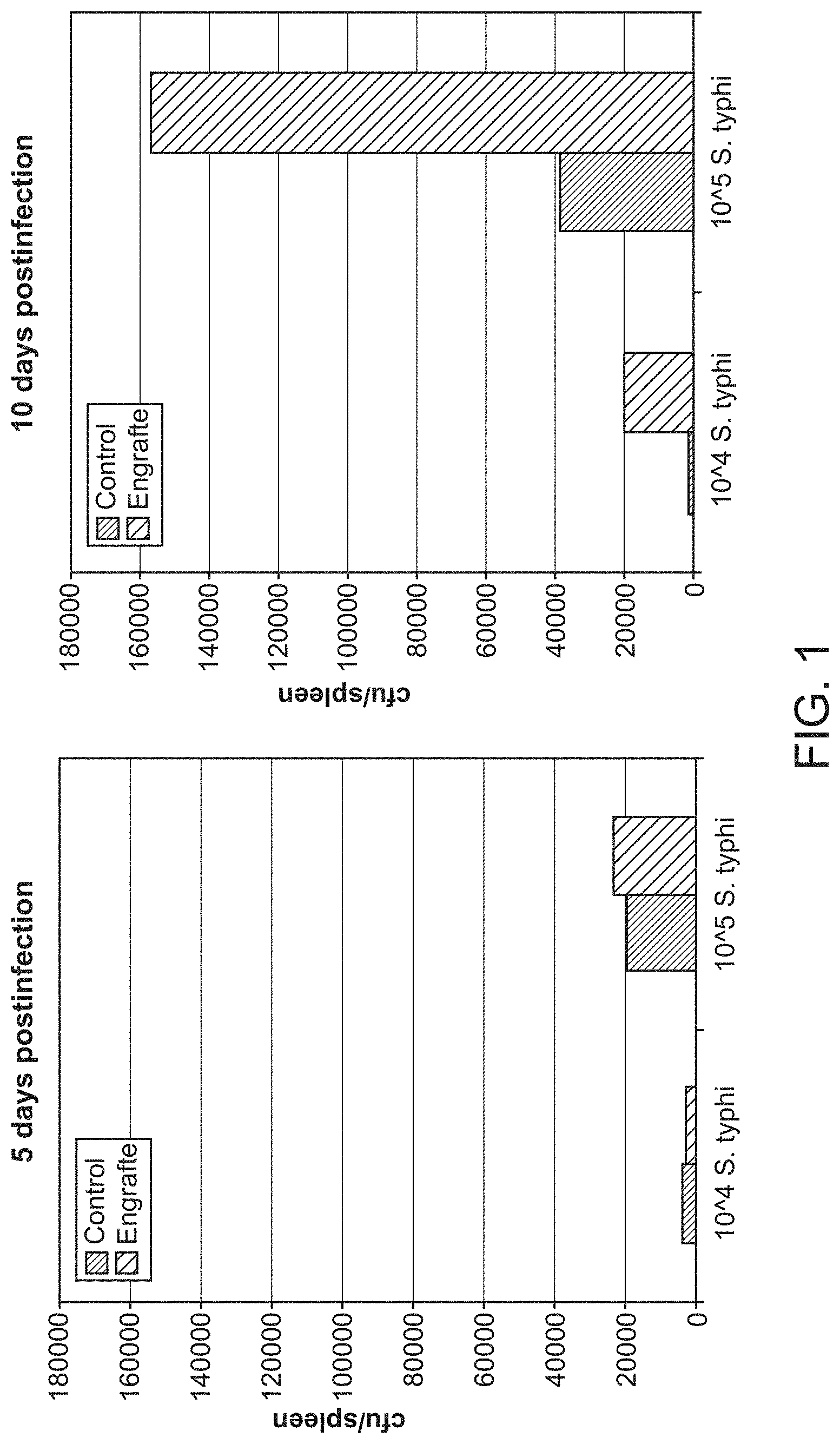Invented by Sean Stevens, Andrew J. Murphy, Richard Flavell, Elizabeth Eynon, Jorge Galan, Tim Willinger, Markus Manz, Anthony Rongvaux, George D. Yancopoulos, Institute for Research in Biomedicine IRB, Yale University, Regeneron Pharmaceuticals Inc
One of the main drivers of this market is the increasing demand for more accurate and reliable models for studying human diseases. Traditional animal models, such as rats and mice, have limitations when it comes to mimicking human physiology and disease progression. Genetically modified mice, however, can be engineered to have specific mutations that are known to cause or contribute to certain diseases in humans. This allows researchers to study the disease in a more accurate and relevant model.
Engraftment takes this a step further by allowing researchers to transplant human cells or tissues into these genetically modified mice. This can be particularly useful for studying diseases that are difficult to model in animals, such as cancer. By transplanting human cancer cells into these mice, researchers can study how the cancer progresses and responds to different treatments.
Another factor driving the market for genetically modified mice and engraftment is the increasing availability of advanced genetic engineering technologies. CRISPR/Cas9, for example, has revolutionized the field of genetic engineering by allowing researchers to make precise and targeted modifications to the genome. This has made it easier and more efficient to create genetically modified mice with specific mutations.
The market for genetically modified mice and engraftment is also being driven by the growing interest in personalized medicine. By studying how different individuals respond to different treatments, researchers hope to develop more personalized and effective therapies. Genetically modified mice and engraftment can play a key role in this by allowing researchers to study how specific mutations or genetic variations affect disease progression and treatment response.
Overall, the market for genetically modified mice and engraftment is expected to continue growing in the coming years. As new genetic engineering technologies emerge and our understanding of human diseases improves, these models will become increasingly important for advancing our understanding of disease and developing new treatments.

The Institute for Research in Biomedicine IRB, Yale University, Regeneron Pharmaceuticals Inc invention works as follows
A mouse with a humanization mIL-3 and mGM CSF genes, a knockout mRAG subunit gene, a mII2rg gene knockout, and optionally a TPO humanization gene is described. The RAG/II2rg knock-in/hTPO mouse is described. The mouse is engrafted by human hematopoietic cells (HSCs), which maintain a population of human immune cells (HICs) derived from HSCs, and is susceptible to infection by human pathogens, such as S. typhi, M. tuberculosis, etc. The mouse is able to model a poorly-modeled human pathogen infection in mice, such as a mycobacterial infection. “A mouse model of a human hematopoietic cancer that arises from early human hematopoietic cell is described.

Background for Genetically Modified Mice and Engraftment
The art is aware of “Genetically Modified Mice, Modified and Engrafted Mice, and their Use in Modeling Human Diseases, e.g. for Drug Testing.” Genetically modified mice have been used to model the human immune system. A review of that field is provided in Manz (2007) Human-Hemato-Lympoid-System Mice: Opportunities and Challenges, Immunity, 26:537-541 hereby incorporated by reference.
Today, no genetically modified mouse has been created that can demonstrate infection with certain human pathogens such as Salmonella typhi. The models for certain pathogenic infections, for which there are mouse models, may not accurately model the pathologies of humans. For example, mouse models for Mycobacterium tuberculosis, M. tuberculosis, do not form well-defined or human immune cell-containing granulomas. To study the effects of pathogens in humans and test drugs to treat humans with these pathogens it would be helpful to have a nonhuman animal, such as a mice, that has been genetically modified to be susceptible to infection. tuberculosis.
In general there is a requirement for genetically modified mouse that can support the maintenance and propagation human hematopoietic cells and for mice suitable to engraft that can model or approximate certain aspects of a hemato lymphoid system in humans, e.g. as a response to a pathogen.
Genetically Modified Non-Human Animals are Provided.” Non-human animals are mice with one or multiple knockouts and humanized genes.
Genetically Modified Mice with Ablated or Compromised Immune Systems are Provided (e.g. via Irradiation), As well as Mice engrafted With Human Hematopoietic Cells or Human Hematopoietic Stem and Progenitor Cells (HSPC). “Genetically modified mice that contain a cell derived from either a hematopoietic stem cell or human HSPC, as well as mice with a hemato lymphoid system are provided.
Genetically altered, irradiated and engrafted mouse are provided which are infectable by a human pathogen but not wild-type mice.” The mice are able to mount an immune reaction in response to exposure to a pathogen (e.g. M. tuberculosis), which is not seen in wild type mice.
The use of genetically modified, irradiated and engrafted mouse strains to identify drug-resistant strains in human pathogens for the testing of human vaccines, developing anti-pathogen drugs, and developing anti-pathogen drugs is described, along with compositions and methods.
Genetically altered mice capable of receiving human immune cells and propagating them are provided. This includes mice that can sustain an hematopoietic cancer in humans.
In one aspect, a gene-modified mouse is provided. It includes: (a), a knockout of the mouse RAG gene; (b), a knockout of the mouse II2rgII2rg genes; and (c) a selection from one or more mouse gene(s) selected from a (mIL-3) gene for mice, (ii), a (mGMCSF) (mGMCSF) (mGMCSF) (mTPO), and (iiiiiiiiiiiiiiiiiiiiiiiiiiiiii), a (mTPO (mTPO) a (mTPO (mTPO (mTPO (mTPO) (mTPO) (mTPO), (mTPO), (m) (m) (iiiiiiiiiiiii) a) a () a) a (mTPO (mTPO) a mTPO (mTPO (mTPO (mTPO (mTPO (m) mTPO (mTPO (mTPO (mTPO (m) mTPO (mTPO (mT) mTPO (mTPO (mTPO (m) m) m) m) m) m) m) m) m) m) m)
In one embodiment, a RAG2 knockout gene is used.

In one embodiment, humanization is achieved by replacing a mTPO with a HTPO. In one embodiment, humanization is essentially humanization of the mTPO with a humanized hTPO.
In one embodiment, humanization involves replacing a mIL-3 with a hIL-3 gene and a mGMCSF with a hGMCSF gene. In a second embodiment, a mouse is further equipped with the replacement of a mTPO (human TPO) gene. In one embodiment, humanization is essentially the replacement of a human TPO (hTPO) gene for a human IL-3 gene.
In one embodiment, humanization involves replacing a mGMCSF gene by a human GMCSF gene. Human GMCSF does not predominately express in the liver or circulation of the mouse. In one embodiment, mouse lung is the predominant site of human GM CSF expression. In one embodiment, the expression of human GM CSF is tissue-specific. It reflects tissue-specific expression in a person.
In one embodiment, after engraftment, the human cell is present at 4 months, 5 months, 6 months, 7 month, 8 month, 9 month, 10months, 11months, or 12months. In one embodiment, a human cell can be detected 4 months, 5 or 6 months later, as well as 8 or 9 months and 10 months.
In one embodiment, a genetically modified mouse engrafted with human cells gives rise to the human hemato lymphoid system, which includes human stem cells and progenitor, human myeloid cell progenitor, human myeloid, human dendritic, human monocytes and neutrophils. It also contains human T-cells, human B-cells and human platelets. In one embodiment, a human hematolymphoid is present 4 months, 5 month, 6 month, 7 months 8 months 9 months 10 months 11 months or 12 months following engraftment.
In one embodiment, a genetically modified mouse engrafted with a human cell exhibits an inflammation response. In one embodiment, the cell of the human is a macrophage. In one embodiment, an alveolar macaphage mediates the macrophage mediated inflammatory response. In one embodiment, the response is mediated by an alveolar macrophage. In one embodiment, the granuloma is a human immuno cell. In one embodiment, the granuloma comprises a well-organized mass. In one embodiment, the granuloma is formed after exposure to mycobacteriums, such as M. tuberculosis. In one embodiment, a mouse has an inflammatory reaction that includes two or more granulomas. The genetically modified mouse with engrafted spleen is used as a model of human M. tuberculosis.
In one embodiment, a genetically modified mouse with engraftment is infected by M. tuberculosis. This infection is characterized at the very least by a granuloma which contains a human immuno cell. In one embodiment, the granuloma comprises a well-organized mass. In one embodiment, M. tuberculosis infects humans with a multidrug resistant or drug-resistant strain. In one embodiment, a mouse infected by M. tuberculosis has a granuloma within its lung. In one embodiment, the granuloma in question is a fully-developed granuloma. In one embodiment, granuloma of the lung contains human immune cells. In one embodiment, the human immune cells in the granuloma can be selected from activated macrophages, activated T-cells, or a combination of both.
In one embodiment, a genetically modified mouse with engraftment exhibits an enhanced mucosal immune system compared to a mouse engrafted without a humanization for one or more IL-3 genes, GM CSF genes, and TPO gene. In one embodiment, enhanced mucosal immune response is a result of an increased expression of interferon? (IFN?) following influenza A infection.
In one embodiment, a genetically modified mouse with engrafted cells contains an infection chosen from M. tuberculosis or S. typhi. In one embodiment, a mouse reproduces S. tuberculosis or M. typhi. In one embodiment, a mouse mounts a anti-mycobacterial immunity response to a pathogenic human mycobacterium. The response includes formation of a cell that is human. In one embodiment, the granuloma comprises a well-developed and mature granuloma.
Click here to view the patent on Google Patents.
